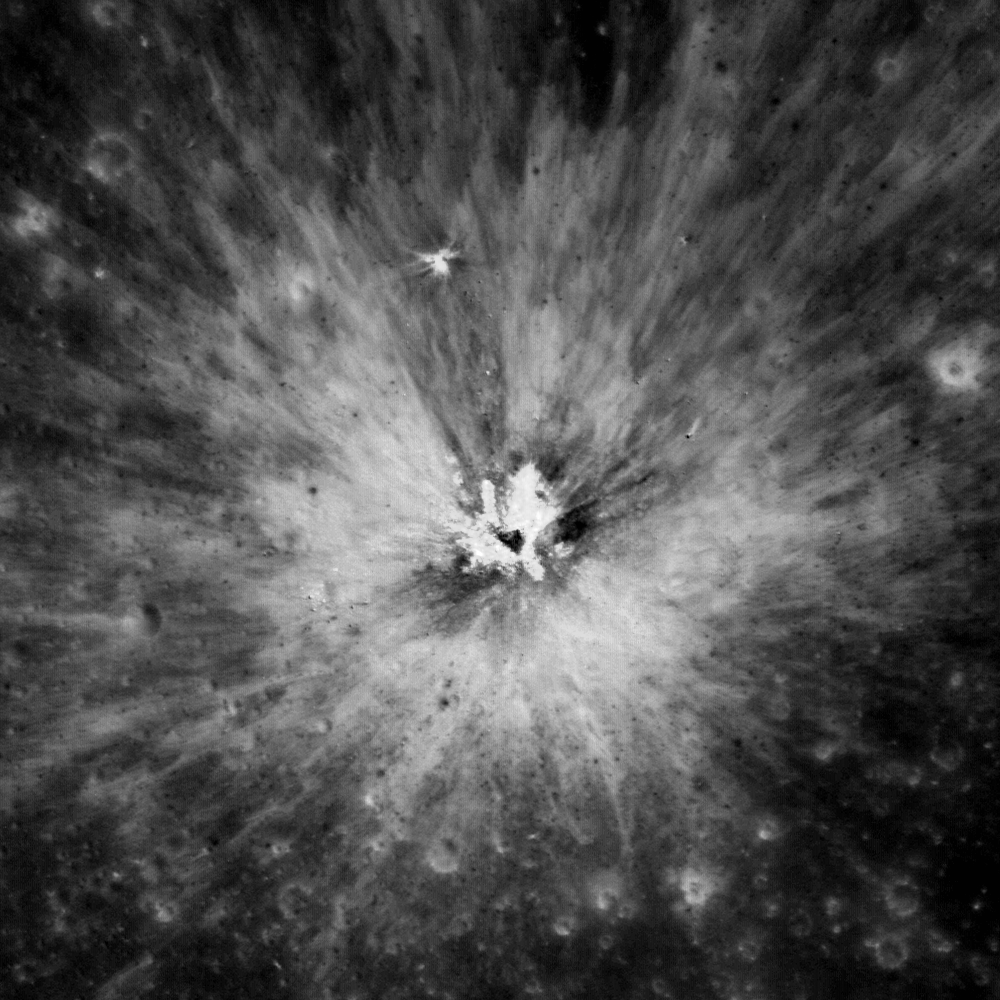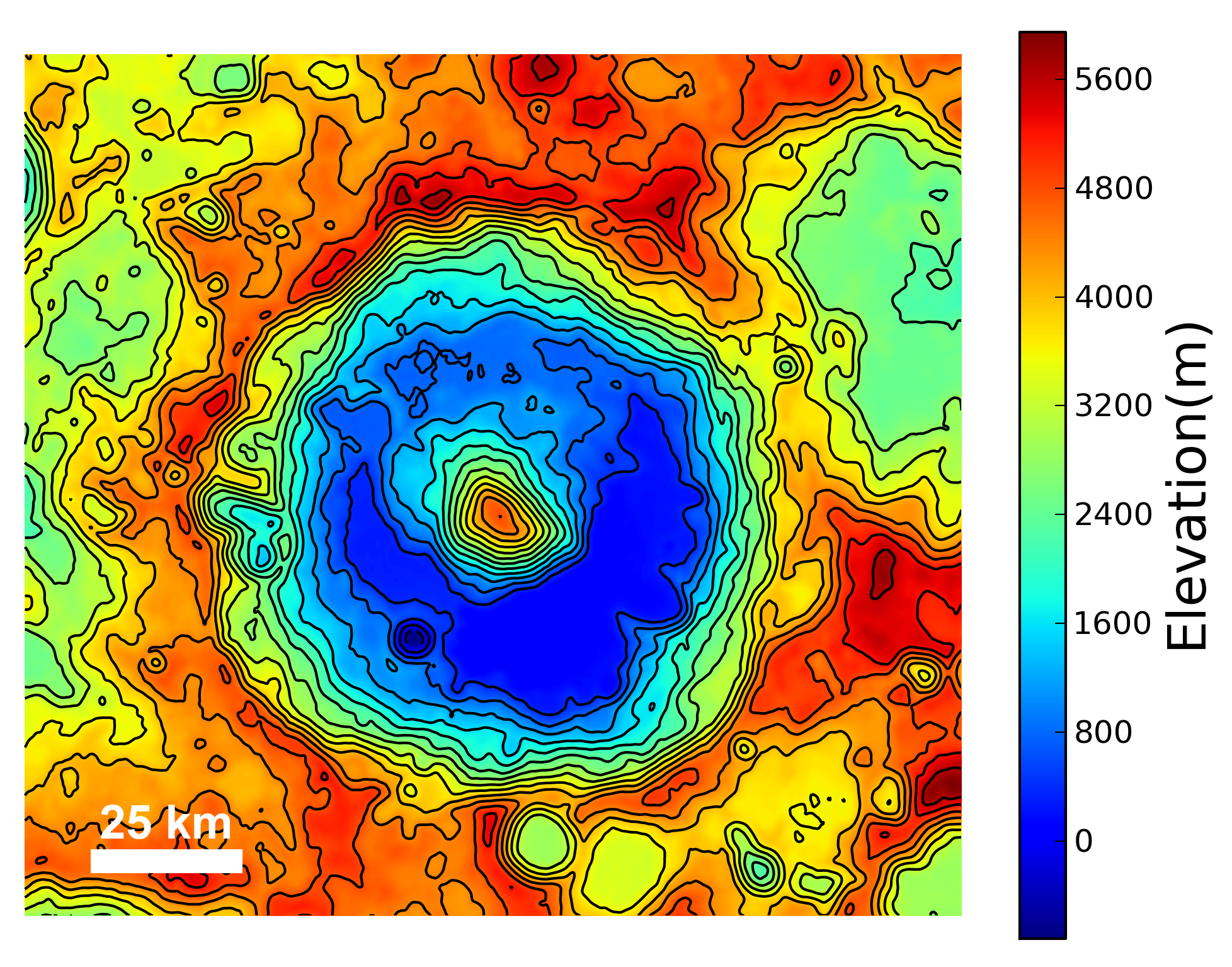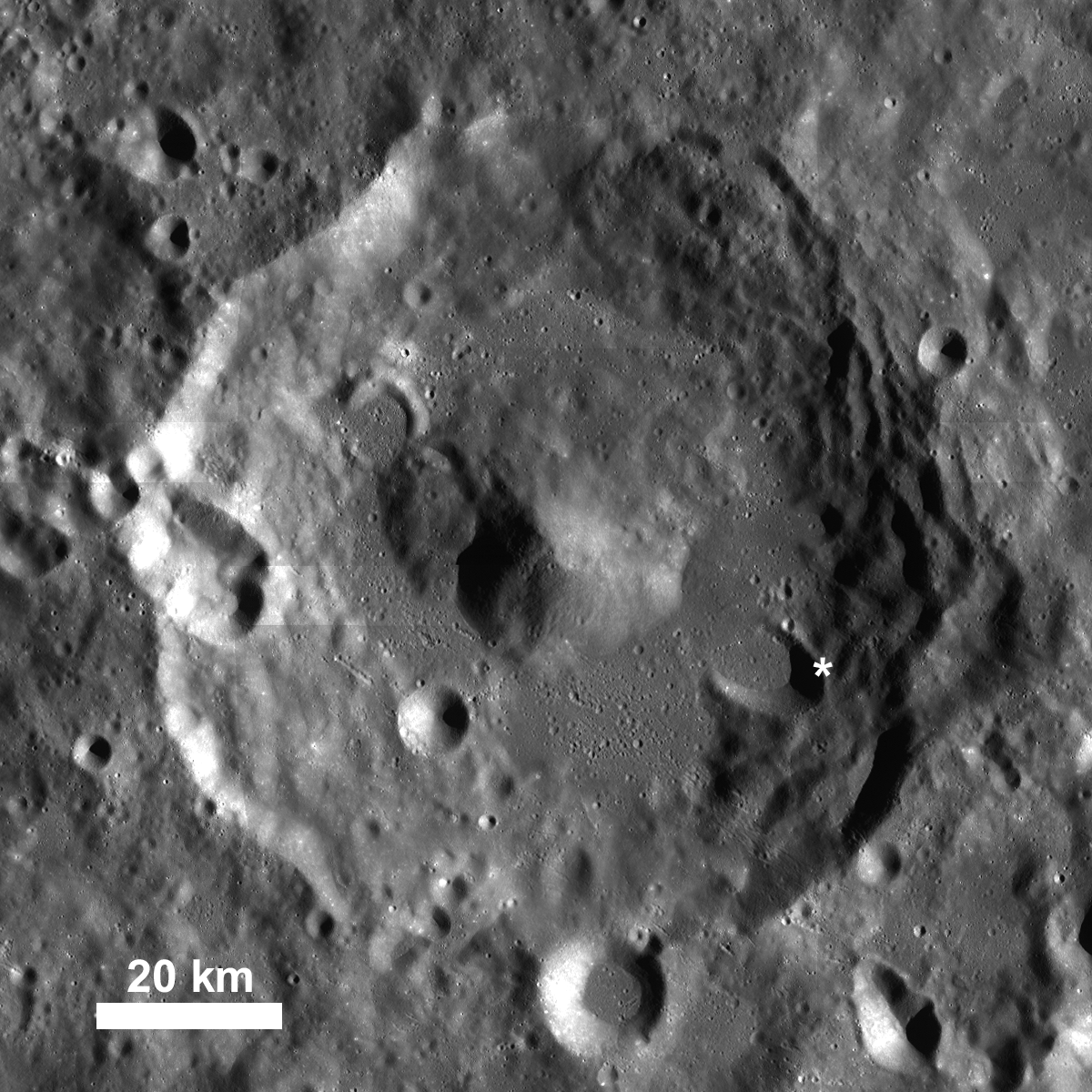
Icarus is a large, complex crater (diameter 93.7 km) with a central peak, located at -5.584°N, 186.998°E. Icarus is named after the mythical Greek flyer. The Featured Image shows a young, fresh crater (located at -5.929°N, 187.696°E) superposed on the older terraces of Icarus. The ejecta of the impact is higher in reflectance compared to the surroundings since the newly excavated material has been exposed to space weathering for a relatively short time. Over time space weathering causes the reflectance of fresh regolith to decrease. The ejecta of the crater in the Featured Image will fade over hundreds of millions of years, until it can no longer be distinguished from the rest of Icarus crater.
While the rim and terraces of Icarus are heavily degraded by subsequent impacts, the crater's central peak is still quite tall. The central peak rises about 4475 meters above the crater floor! Compared to other craters of similar diameter, this is quite a tall central peak! Consider many of the other complex craters with central peaks featured in the LROC images: Moretus, Hayn, Aristarchus, Theophilus, Bullialdus, Langrenus, Copernicus, and Tsiolkovskiy. For example, Tycho (~82 km in diameter) crater's central peak is 2 km above the crater floor.
All of these complex craters have a few common characteristics. First, the impact has to be large enough to cause a complex crater. Relatively smaller impacts create simple craters, which are bowl-shaped and have no central peak or terraces. After the excavation phase of the impact, the transient cavity collapses. This collapse is driven by gravity, which causes the uplift of the central peak as well as the collapse of the rim inward, which forms terraces along the interior wall. Some times an impact is so large that it creates a ring of peaks instead of just one central peak.
Explore more of the interior of Icarus with this LROC NAC!
Related Images:
Lunar Topography - As Never Seen Before!
Copernicus Central Peak From The West
Published by Sarah Braden on 23 October 2012

